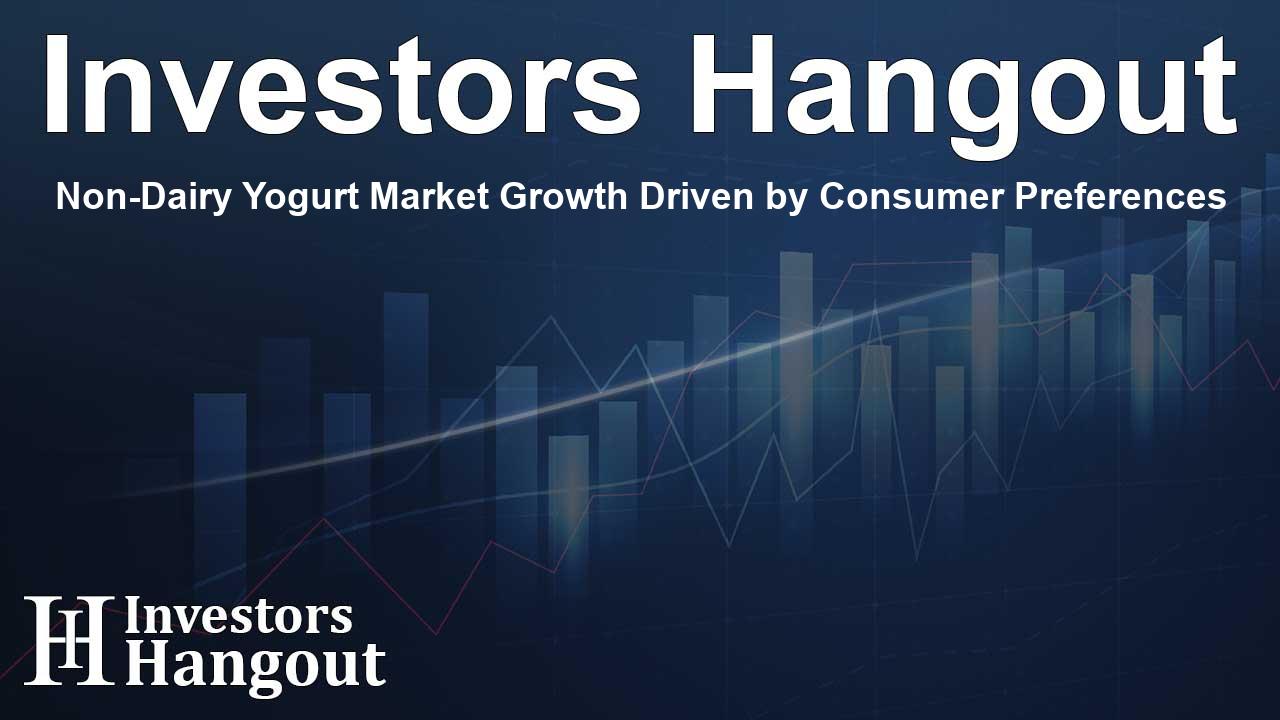Non-Dairy Yogurt Market Growth Driven by Consumer Preferences

Non-Dairy Yogurt Market Overview
The global non-dairy yogurt market is experiencing significant growth, with a valuation of USD 1,979.0 million noted recently. This upward trend reflects a growing interest among consumers for plant-based alternatives. The forecast for 2025 anticipates an increase to USD 2,136.7 million, and estimations suggest a robust compound annual growth rate (CAGR) of 4.3% through to 2035, ultimately reaching an expected valuation of USD 3,241.6 million. Such growth can be attributed to an increasing population of health-conscious individuals and a strong inclination towards sustainable food options.
Health Benefits Driving Demand
The Role of Cultured Yogurts
Health professionals are highlighting the numerous benefits associated with cultured yogurts, emphasizing improved digestion and weight management as key factors driving the demand for dairy-free options. The consumer shift towards healthier eating habits has resulted in an escalating preference for unique flavors, including fruit-infused and tropical varieties. This trend is particularly appealing to younger demographics looking for exciting and innovative food experiences.
Demand Analysis in the Market
Lactose Intolerance and Growth
Lactose intolerance is becoming increasingly recognized, prompting consumers to seek non-dairy yogurt as a healthier and cruelty-free alternative to conventional dairy products. The move towards diverse flavor offerings, including tropical fruit mixes and unique combinations, is serving to attract a broader audience, especially among younger consumers eager to experiment with their dietary choices.
Key Trends in Non-Dairy Yogurt
Plant-Based Diet Adoption
There is an observable trend of increasing participation in plant-based diets, primarily fueled by health-conscious choices. Consumers are turning to non-dairy yogurts to fulfill their nutritional needs while being mindful of ethical and environmental impacts associated with traditional dairy farming.
Innovative Flavor Profiles
To remain competitive, brands are constantly innovating flavor profiles and ingredients to cater to evolving consumer preferences. Options are expanding from traditional fruit flavors to more adventurous tastes like salted caramel and even matcha green tea, appealing to a diverse range of palates.
Clean Label Movement
Consumers are becoming more discerning, favoring products with clean labels that feature recognizable and natural ingredients. This shift has led to a heightened demand for non-dairy options free from artificial additives, solidifying the importance of transparency in product offerings.
Integration of Functional Ingredients
Manufacturers are stepping up efforts to enhance the nutritional profile of non-dairy yogurts by including functional ingredients. By integrating plant-based proteins, prebiotics, and superfoods such as chia seeds, brands are appealing to those seeking added health benefits beyond the standard yogurt experience.
Industry Insights Across Regions
United States
The non-dairy yogurt sector in the United States expects to grow at a CAGR of 3.1% through 2035, driven by rising health awareness. With manufacturers providing a range of flavors and textures, the market is poised for robust development.
India
India's burgeoning non-dairy yogurt market is projected to witness a growth rate of 4.9% through 2035, fueled by rising disposable incomes and increasing awareness of plant-based nutrition.
China
Continuing from 2025 to 2035, China's non-dairy yogurt market is anticipated to gain momentum through significant contributions from local manufacturers tailoring products to regional tastes and preferences.
Germany
Germany's market is characterized by a deep-rooted dairy culture yet is witnessing a transition toward non-dairy alternatives with consumers increasingly preferring sustainable and ethically sourced dairy-free options.
Leading Companies in the Market
Key players in the non-dairy yogurt market include renowned brands like General Mills, The Hain Celestial Group, Danone SA, and Nestlé, all working diligently to expand their product portfolios to cater to the growing demand for non-dairy alternatives.
Frequently Asked Questions
What factors are driving the growth of the non-dairy yogurt market?
Growing health consciousness, dietary shifts toward plant-based options, and innovative flavor offerings are key drivers of this market's growth.
What is the projected market value for non-dairy yogurt by 2035?
The non-dairy yogurt market is anticipated to reach USD 3,241.6 million by 2035, showcasing significant growth.
How is consumer demand influencing new product development?
Consumers are actively seeking diverse flavors and health benefits, prompting manufacturers to innovate their product lines and focus on functional ingredients.
Which regions are seeing the most growth in non-dairy yogurt consumption?
Regions such as the United States, India, and China are at the forefront of the growing non-dairy yogurt trend, reflecting varying consumer preferences and market dynamics.
What are some emerging trends in the non-dairy yogurt sector?
Emerging trends include clean label initiatives, functional ingredient enhancements, and collaborations to foster innovative product offerings in the market.
About Investors Hangout
Investors Hangout is a leading online stock forum for financial discussion and learning, offering a wide range of free tools and resources. It draws in traders of all levels, who exchange market knowledge, investigate trading tactics, and keep an eye on industry developments in real time. Featuring financial articles, stock message boards, quotes, charts, company profiles, and live news updates. Through cooperative learning and a wealth of informational resources, it helps users from novices creating their first portfolios to experts honing their techniques. Join Investors Hangout today: https://investorshangout.com/
Disclaimer: The content of this article is solely for general informational purposes only; it does not represent legal, financial, or investment advice. Investors Hangout does not offer financial advice; the author is not a licensed financial advisor. Consult a qualified advisor before making any financial or investment decisions based on this article. The author's interpretation of publicly available data presented here; as a result, they should not be taken as advice to purchase, sell, or hold any securities mentioned or any other investments. If any of the material offered here is inaccurate, please contact us for corrections.